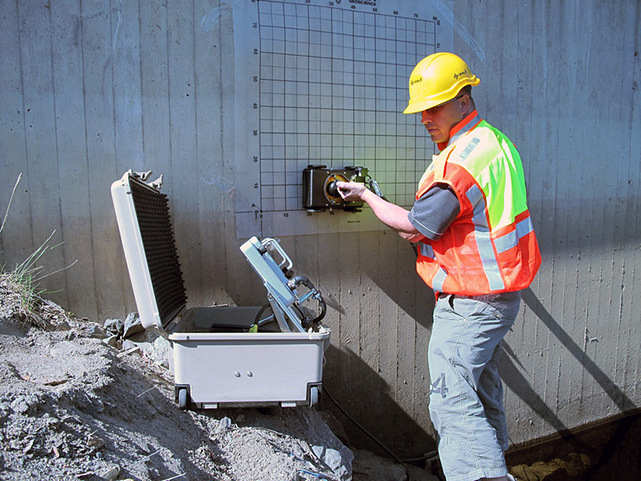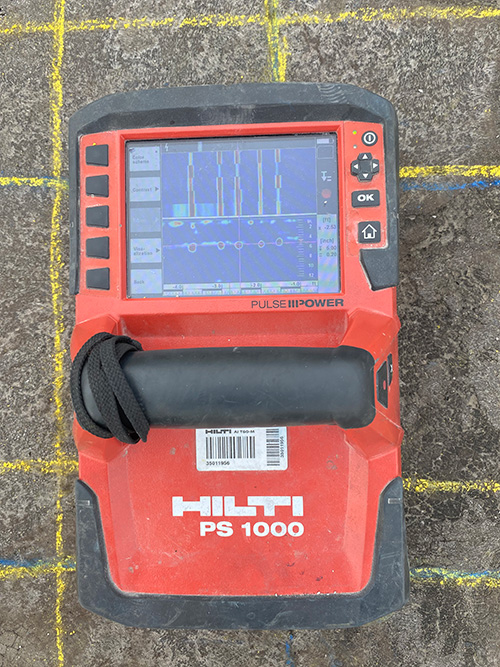Reveal the Transformative Power of Concrete Scanning in Maximizing Performance and Safety
Concrete scanning has actually become a crucial tool in the construction market, providing unrivaled advantages in enhancing job efficiency and guaranteeing security requirements. By utilizing sophisticated technology, concrete scanning allows specialists to see beyond the surface area, revealing surprise intricacies that might affect the structural stability of a structure. The transformative power of concrete scanning hinges on its capacity to supply detailed insights and real-time information, changing how projects are prepared and executed. As we look into the intricacies of this ingenious method, a world of opportunities opens, showcasing a brand-new period of construction practices that focus on precision and safety and security.
Significance of Concrete Scanning
Making sure the architectural honesty and safety of building and construction tasks begins with the vital step of conducting thorough concrete scanning. Concrete scanning is a non-destructive method made use of to find and map subsurface aspects within concrete structures. This procedure is vital in identifying possible hazards, such as rebar, post-tension cables, and channels, that may be concealed within the concrete. By utilizing innovative technologies like ground-penetrating radar (GPR) and electromagnetic induction, building and construction teams can properly find these components without causing any kind of damage to the framework.
In addition, concrete scanning aids in optimizing job timelines and budget plan by preventing unforeseen costs and delays that may occur due to unexpected obstructions within the concrete. Ultimately, spending in comprehensive concrete scanning is a positive method that enhances both efficiency and safety in construction jobs.
How Concrete Scanning Works
Concrete scanning runs as an essential tool in construction projects by utilizing innovative technologies to find and map subsurface components without creating structural damage. Ground Passing Through Radar (GPR) and Electromagnetic Induction (EMI) are two main techniques used in concrete scanning. GPR jobs by emitting high-frequency radar pulses right into the surface area, which get better when they come across subsurface objects or gaps. The moment considered the signal to return suggests the deepness and area of the objects. EMI, on the other hand, utilizes electromagnetic fields to recognize variances in material compositions, such as recognizing rebar or conduits within concrete frameworks.
During the scanning process, the data accumulated is analyzed in real-time, enabling prompt identification of possible dangers or obstacles below the surface area. This details aids in decision-making, guaranteeing that building activities proceed securely and successfully. Additionally, 3D imaging software program can be made use of to produce topographic maps of the subsurface elements, additionally enhancing project preparation and execution. By employing these advanced technologies, concrete scanning considerably minimizes the danger of expensive damages and injuries on building and construction websites.
Benefits of Concrete Scanning
One of the primary benefits of concrete scanning is the capacity to identify and situate embedded items such as rebar, post-tension cords, and avenues precisely. Concrete scanning assists in preparation and designing extra successfully, as it offers specific details concerning the location and deepness of architectural components.

Case Research Studies: Concrete Scanning Success

In an additional case, a construction company utilized 3D concrete scanning to assess the condition of maturing concrete structures in a historical building. The comprehensive scans offered beneficial insights into the extent of degeneration and aided prioritize maintenance efforts successfully. By proactively resolving areas of problem determined with scanning, the firm was able to extend the life expectancy of the structure and make sure resident security.
These study highlight the transformative power of concrete scanning in boosting effectiveness, precision, and security in building jobs.
Applying Concrete Scanning in Projects
Applying advanced scanning innovations during building projects has become progressively vital for improving precision and security. By integrating concrete scanning into project preparation and execution, building teams can identify potential dangers, such as rebar or post-tension wires, concealed within concrete structures. This proactive approach decreases the threat of accidents, hold-ups, and expensive rework, eventually resulting in more reliable task timelines and spending plans.
To carry out concrete scanning efficiently, project supervisors must work together carefully with skilled scanning specialists to establish one of the most suitable scanning strategies for the certain job requirements. Involving scanning professionals from the onset of a job enables the group to produce extensive scanning strategies that attend to essential locations of worry and make certain detailed data collection.
Moreover, integrating concrete scanning into normal project operations can improve decision-making procedures, as real-time scan data gives instant understandings into the problem of concrete frameworks - Concrete Scanning. This data-driven method facilitates educated problem-solving and makes it possible for groups to make adjustments without delay, fostering a society of efficiency and security throughout the task lifecycle

Final Thought
In conclusion, concrete scanning plays an important duty in enhancing efficiency and security in building jobs. By making use of innovative technology to discover and map out underlying structures within concrete, this procedure helps to stop pricey blunders, ensure structural integrity, informative post and lessen threats on website. With the capacity to reveal surprise components and provide precise data, concrete scanning verifies to be a useful device for maximizing task results and making the most of general success.
Concrete scanning is a non-destructive technique utilized to discover and map subsurface aspects within concrete structures. Additionally, concrete scanning assists in enhancing job timelines and budget plan by go to this website avoiding unexpected costs and hold-ups that might emerge due to unforeseen blockages within the concrete. One remarkable situation research study involves a large-scale remodelling project where concrete scanning played an essential duty in ensuring task success.In an additional situation, a building business utilized 3D concrete scanning to analyze the problem of aging concrete structures in a historic building. By incorporating concrete scanning into job planning and execution, construction teams can recognize potential risks, such as rebar or post-tension cable televisions, hidden within concrete frameworks.